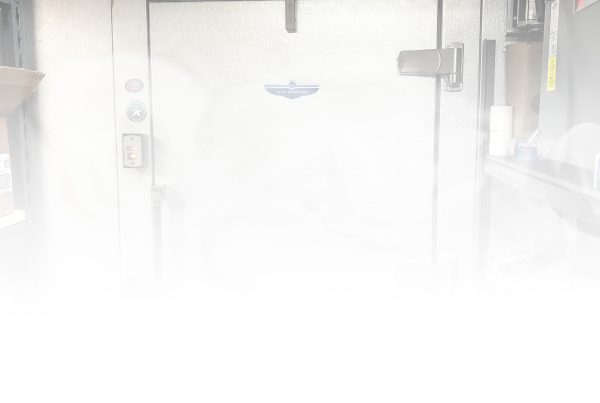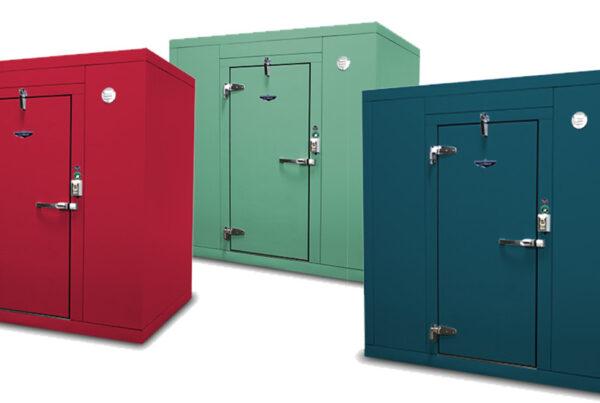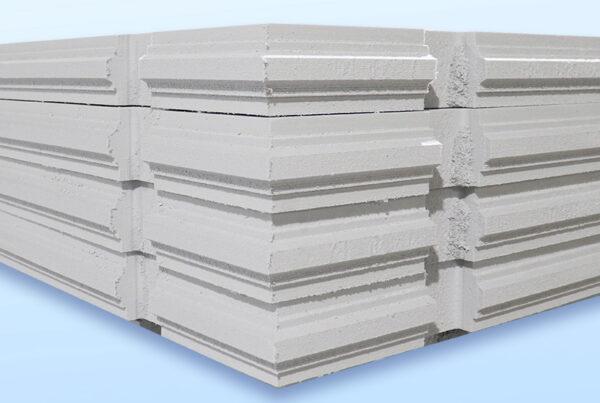Myth: “Laminated” or “Slab” panels are inferior to urethane because they are glued to the skins to hold the panel together. Therefore, these types of panels are not considered as durable and are thought to come loose within a short period of time.
Truth: For over 40 years walk-ins have been manufactured by either gluing insulation to metal skins (laminated) or pouring urethane (foamed-in-place) between two metal skins. Contrary to most beliefs, both systems provide equal performance in adhesion if applied correctly. This is important because in walk-ins the structural strength of the unit is dependent on this adhesion performance. When metal skins are glued or foamed to insulation a composite panel is created. This created panel performs much like a steel I-beam. I-beams by design are very strong for their weight and are used in building structures that need a lot of strength without the weight, such as skyscrapers. A steel I-beam is two flanges of steel connected and separated by a center steel web. In a walk-in panel, the two flanges are light gauge metal skins and the web is the foam insulation. All I-beams lose their strength if the flanges separate from the web. If the I-beams separate, skyscrapers would collapse. This is similar to walk-ins that could fail if the skins separate from the foam insulation.

Delaminated Ceiling Panel
Both of these manufacturing processes, glued panels and foamed-in-place panels, if applied correctly have the same ability to adhere to the metal skins. They both use polyurethane as the bonding agent but use different processes in manufacturing. Urethane panel production requires much more attention to following procedures than laminated panels do. In the foamed-in-place process, blowing polyurethane foam in between the metal allows it to hold itself to the metal skins. When R-12, now outlawed, was used as the blowing agent in foamed-in-place polyurethane, it would adhere to almost any material and could be applied at a broad temperature range, while providing a high level of product strength. There was little need to watch the manufacturing process. As the old foamed-in-place blowing agents were replaced by new blowing agents, the manufacturing procedures became more demanding. Today, the foam needs to be applied and cured at a much more restricted manufacturing process temperature. The fixtures that hold the panel need to be accurately temperature controlled to accomplish this. Any variation of the temperature during the manufacturing process can cause the panel adhesion to fail in the field. Many manufactures do not have the right equipment or quality procedures to meet these demanding manufacturing requirements. Glued panels however, do not use blowing agents and do not require as stringent manufacturing procedures. The glue used for laminated panels is made specifically for this application and is produced to attach foam to metal. The equipment to apply the glue correctly is readily available and the ability of the glue to adhere to different materials is evident in its wide use in the recreational and housing industry.
In addition to the manufacturing process and the adhesive, there are two other key factors that must be considered: foam characteristics and human error. In the case of extruded polystyrene (slab), because it is a closed cell structure the glue sits on top of the foam and forms a bonding layer between the foam and the skins. The foam must be strong enough to hold the panels together. Since polyurethane is made of chemicals and gasses, when the foam is blown in between the metals, gasses release and form voids in the insulation. The voids, or open spaces, against the metal can cause the metal to detach from the foam. Although it is uncommon, delamination is repeatedly due to human error, not product performance. For foamed-in-place panels, if the foam was not cured accurately or at the correct temperatures there is a possibility of delamination occurring. For laminated panels, if the panels were not pressed or glued correctly there could be a risk of delamination.
Even though delamination is rare, it is still possible in both forms of manufacturing. If your unit delaminates, it can cause severe expense and inconvenience to a business relying on their walk-in to keep their product cold or frozen.
In conclusion, it has always been identified that the application of quality controlled manufacturing processes determines the products quality to the customer. Can both manufacturing processes meet the punishing requirements of walk-ins in the field? The answer is yes, but glued panels are now more forgiving in manufacturing than foamed-in-place polyurethane units due to the changes in blowing agents.




I love my laminated panels! 🙂